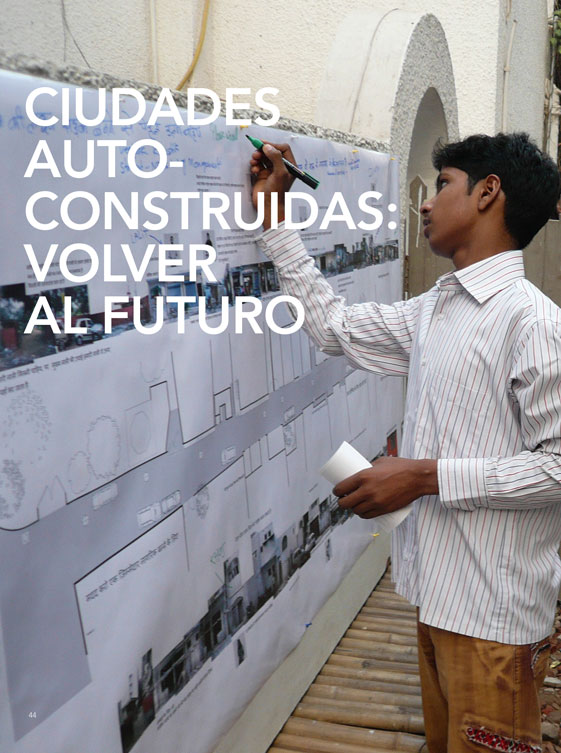Ciudades auto-construidas: volver al futuro
Article Sidebar

Keywords:
Main Article Content
Abstract
América Latina e India comparten una historia común experimentando para mejorar los barrios informales pobres (o barriadas) y explorando estrategias para la construcción progresiva. Las ideas de F. C. Turner, quien recolectó información durante años de trabajo en Lima, han inspirado especialmente algunos de los planes y proyectos más progresivos en Bombay y otras partes de India. Este ensayo revisa aspectos destacados de la historia de las viviendas sociales en Bombay. Luego, describe la teoría que hay detrás del proyecto de URBZ denominado “Homegrown Cities” (“Ciudades auto-construidas”), y lo ubica dentro del contexto más amplio de las ideas de Turner y los proyectos realizados por arquitectos indios como B. V. Doshi y Charles Correa.
Article Details
Materia Arquitectura provides immediate and free access to all the content of this online edition, published simultaneously with the print edition.
Materia Arquitectura does not charge authors for any concept.
All contents of this electronic edition are distributed under the Creative Commons license of "Attribución-shareAlike 4.0 Internacional" (CC-BY-SA).
The rights of the published texts and images belong to their authors, who grant Materia Arquitectura the license for their use. The management of the permits and the authorization of the publication of the images (or of any material) that contains copyright and its consequent rights of reproduction in this publication is the sole responsibility of the authors of the articles.
As long as they mention their origin, the authors are free to distribute their articles by other means. Any total or partial reproduction of the material must mention its origin.
Downloads
References
BHATT, V. ET AL. (1990). How the Other Half Builds (Volume 3 - The Self-Selection Process). Ahmedabad, Montreal: Vastu Shilpa Foundation, McGill University (Minimum Cost Housing Group Publication Series).
JAIN, B. (17 de octubre de 2010). 62% of Mumbai lives in slums: Census. Hindustan Times, págs. http://www.hindustantimes.com/India-news/Mumbai/62-of-Mumbai-lives-in-slums-Census/Article1-614027.aspx. Obtenido de: http://www.hindustantimes.com/India-news/Mumbai/62-of-Mumbai-lives-in-slums-Census/Article1-614027.asp
MCGUIRK. (21 de abril de 2011). PREVI: The Metabolist utopia. Forty years later, an experimental district offers us an unparalleled insight into the slow metabolism of the infinite city. Domus. Recuperado el 1 de julio de 2013, de http://www.domusweb.it/en/architecture/2011/04/21/previ-the-metabolist-utopia.html
RYBCZYNSKI, W. ET AL. (1984). How the Other Half Builds (Volume 1 – Space). Ahmedabad, Montreal: Vastu Shilpa Foundation; McGill University (Minimum Cost Housing Group Publication Series).
TURNER, J. F. C. (11 de septiembre de 2000). Interview of John F. C. Turner. (R. Chávez, J. Viloria, & M. Zipperer, Entrevistadores) Washington DC: World Bank. Obtenido de World Bank: siteresources.worldbank.org/INTUSU/Resources/turner-tacit.pdf
WORLD BANK (1997). Implementation Completion Report India: Bombay Urban Development Project. World Bank Energy and Infrastructure Operations Division, South Asia Region.
Most read articles by the same author(s)
- Matias Echanove, Rahul Srivastava, Homegrown Cities: Back to the Future , Materia Arquitectura: No. 07 (2013): Materia Arquitectura 07 (Agosto/August 2013)